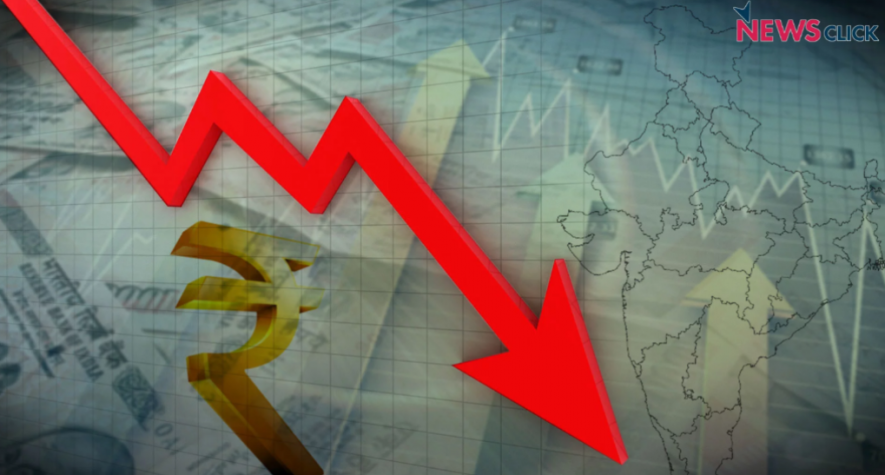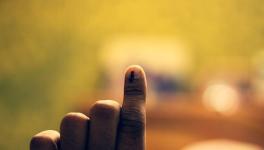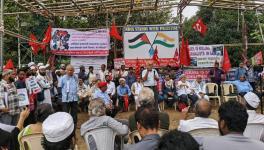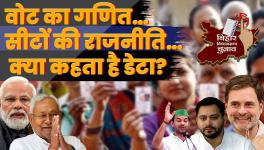Budget 2025-26: Income Tax Changes Won’t Solve Economic Crisis

There have been euphoric reactions from talk show experts, industrialists, pro-government economists and the ‘godi media’ on the announcement of a cut in income tax. Many are celebrating this as evidence that the Narendra Modi government has done this to ‘pump prime’ or ‘kick-start’ the flagging Indian economy.
Before going into the fine print, it must be said that if indeed the government is trying to boost demand, then it has come to this realisation after several years of floundering around with its eyes wide shut. Ever since the economy started showing signs of faltering in 2018-19, it was being pointed out that the problem of growth and lack of employment is all tied up with flaccid demand. People just did not have adequate buying power in their hands. Inflation was further eroding it.
So, what was needed was more money in the hands of people coupled with more government expenditure to create employment, increase wages, etc. Years of ignoring this path and sticking to the neoliberal formula of cutting or restricting government expenditure, including for welfare schemes, has steadily worsened the situation.
Will This Help Boost Demand?
But there is more to the story. Let us look at the income-tax announcement. It will certainly benefit a section of the middle class – those who are earning between Rs.7 lakh to Rs.12 lakh per year, that is about Rs.58,000 to Rs.1 lakh per month. Their tax liability will go – they don’t have to pay any tax. Those who were earning up to Rs.7 lakh were in any case exempt before this announcement. So, it is a sliver of the so-called middle class that gets some benefit.
Is this sufficient to kick-start the economy by pump-priming demand? The answer, unfortunately, is no. Let us see why. By an ironic coincidence, just two days before the Budget was presented to Parliament, another arm of the government released the full report of the Household Consumer Expenditure Survey (HCES) 2023-24. This report among other things, gives monthly per capita expenditure for various economic and social strata of society. Household spending can be seen as a proxy for income or earnings, especially for poorer sections, which make up the majority of the country’s vast population.
What does the HCES reveal? At constant prices, the average monthly spending of a four-member family is Rs.8,316 in rural areas and Rs.14,528 in urban areas. That means average annual income is just Rs. 99,792 and Rs. 1,74,336, respectively, in rural and urban areas. This is way below the targeted section for the current income tax relief. In fact, most people in the country do not pay income-tax. So, the chances of this exemption kick-starting the economy by boosting demand are minimal.
What Could Have Been Done
What would really boost demand is – increasing wages of agricultural and non-farm workers, industrial workers and employees; increasing the earnings of farmers by giving Minimum Support Prices for different produce at the C2+50% level (as recommended by the MS Swaminathan Commission back in 2006, and as promised by the Bharatiya Janata Party in the run-up to 2014 General Election); protecting Indian markets from imports so that industry, especially the MSME (medium, small and micro enterprises) sector units can flourish; protecting the public sector which gives more employment and better wages; and expanding government spending in key sectors, such as the public distribution system, education, health, etc. thereby reducing the increasing burden on family budgets.
All these and allied measures will put money in the hands of people creating the elusive demand, that in turn will spark off more investment in new productive capacities, thus creating more jobs. This will further increase demand ….and so on.
Another key policy measure that is needed is controlling inflation, which till now has been left in the hands of esoteric monetary policy mandarins. To control inflation, not only does production of essential food items need to be raised but its trade and distribution needs to be controlled.
The expansion of a robust public distribution system will ensure that essential commodities, such as foodgrain, cooking oil, fuels, clothing, stationary, etc. reach families at affordable prices. This will automatically lower the open market rates. Extortionate taxes like those on petroleum products should be done away with in order to reduce the indirect tax burden on the people.
It is also necessary to tax the richer sections more, including bringing in a wealth tax and increasing corporate tax, which was drastically cut in 2018 by the Modi government. Remember: corporate profits are at a 15-year high and corporate tax contribution to the tax kitty of government has shrunk to just 17% in the Budget presented today, compared with income tax contribution of 22%.
Govt Still Catering to Corporates
However, far from these measures, the government has used the income-tax change just to create the impression that it is sensitive to economic distress and providing a solution to it. The reality, is far from it, as discussed above. The income-tax change is thus only a sleight of hand, meant to win back sections of the middle class, which is getting disaffected.
Perhaps it may have an added advantage of enticing voters in Delhi where the BJP is facing an uphill battle against the incumbent Aam Aadmi Party government in the elections to the Delhi Assembly.
But if one goes through the Budget, it is clear that the stress is still on somehow luring international capital into India (safe harbour provision, reducing criminal liability), or to boosting the well-being of domestic corporates. There is still the neoliberal control over increasing government expenditure – there is only a 7% increase in Budget spending over last year, which will come to nought if inflation is accounted for.
There is no expansion of welfare schemes. There is the usual hullabaloo over ‘skilling’ people so that jobs will become available, or giving small loans (like for home stay managers) to supposedly boost jobs.
The government’s policy is frozen in a mould that is just not delivering the needed changes for the people – and every year more of the same is peddled in different forms.
Get the latest reports & analysis with people's perspective on Protests, movements & deep analytical videos, discussions of the current affairs in your Telegram app. Subscribe to NewsClick's Telegram channel & get Real-Time updates on stories, as they get published on our website.
























